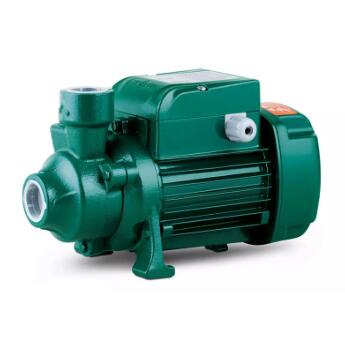Understanding Peripheral Pumps: A Comprehensive Guide to Features and Applications
2024-12-06
Peripheral pumps, also known as regenerative or turbine pumps, play a vital role in many industrial and residential applications. Known for their ability to handle high-pressure requirements with compact designs, these pumps are often used in systems where reliable performance and efficiency are essential. This blog explores the unique characteristics, working principles, and common uses of peripheral pumps.
What is a Peripheral Pump?
A peripheral pump is a type of dynamic pump that uses a rotating impeller to move fluid. Unlike centrifugal pumps, peripheral pumps rely on an impeller with numerous small blades along its edge. These blades create a high-velocity fluid flow, which generates pressure as the fluid circulates around the pump casing in a peripheral path.
Key Features of Peripheral Pumps
1. High Pressure, Low Flow
Peripheral pumps are designed for applications that require high pressure but relatively low flow rates, making them ideal for situations where precision is critical.
2. Compact and Lightweight
These pumps have a small footprint and are easy to install, even in space-constrained environments.
3. Versatile Material Options
Available in various materials such as cast iron, stainless steel, and bronze, peripheral pumps can handle a wide range of liquids, including corrosive fluids.
4. Efficiency in Low-Viscosity Fluids
Peripheral pumps perform exceptionally well with clean, low-viscosity fluids, ensuring smooth and efficient operation.
5. Self-Priming Capability
Some models are equipped with self-priming functionality, which simplifies startup and operation, especially in systems prone to air bubbles.
How Peripheral Pumps Work
The pump’s impeller blades create a circulating motion that draws fluid into the pump housing. The fluid passes through narrow passages in the casing, gaining velocity and pressure through multiple circulations. This "regenerative" process results in higher pressure compared to centrifugal pumps of similar size.
Applications of Peripheral Pumps
1. Water Supply Systems
Peripheral pumps are commonly used in domestic water boosting systems for high-rise buildings and irrigation.
2. Industrial Processes
They are ideal for cooling systems, chemical dosing, and transferring clean fluids in industrial setups.
3. Heating and Cooling Systems
Peripheral pumps are frequently used in boiler feed systems and heat exchangers, where high pressure is needed to circulate fluids efficiently.
4. Laboratory and Medical Equipment
The precise flow control of peripheral pumps makes them suitable for laboratory applications, such as sample preparation or fluid analysis systems.
Benefits of Using Peripheral Pumps
1. Pressure Generation: Exceptional capability to generate high pressure without needing a large pump size.
2. Cost-Effectiveness: Affordable and efficient for applications requiring moderate flow rates.
3. Durability: Long-lasting performance with minimal maintenance when properly selected for the application.
Peripheral pumps offer a unique combination of high pressure, compact design, and versatility. They are indispensable in various industries, providing reliable and efficient solutions for specific fluid handling needs. Understanding their features and applications can help you choose the right pump for your system, ensuring optimal performance and longevity.



